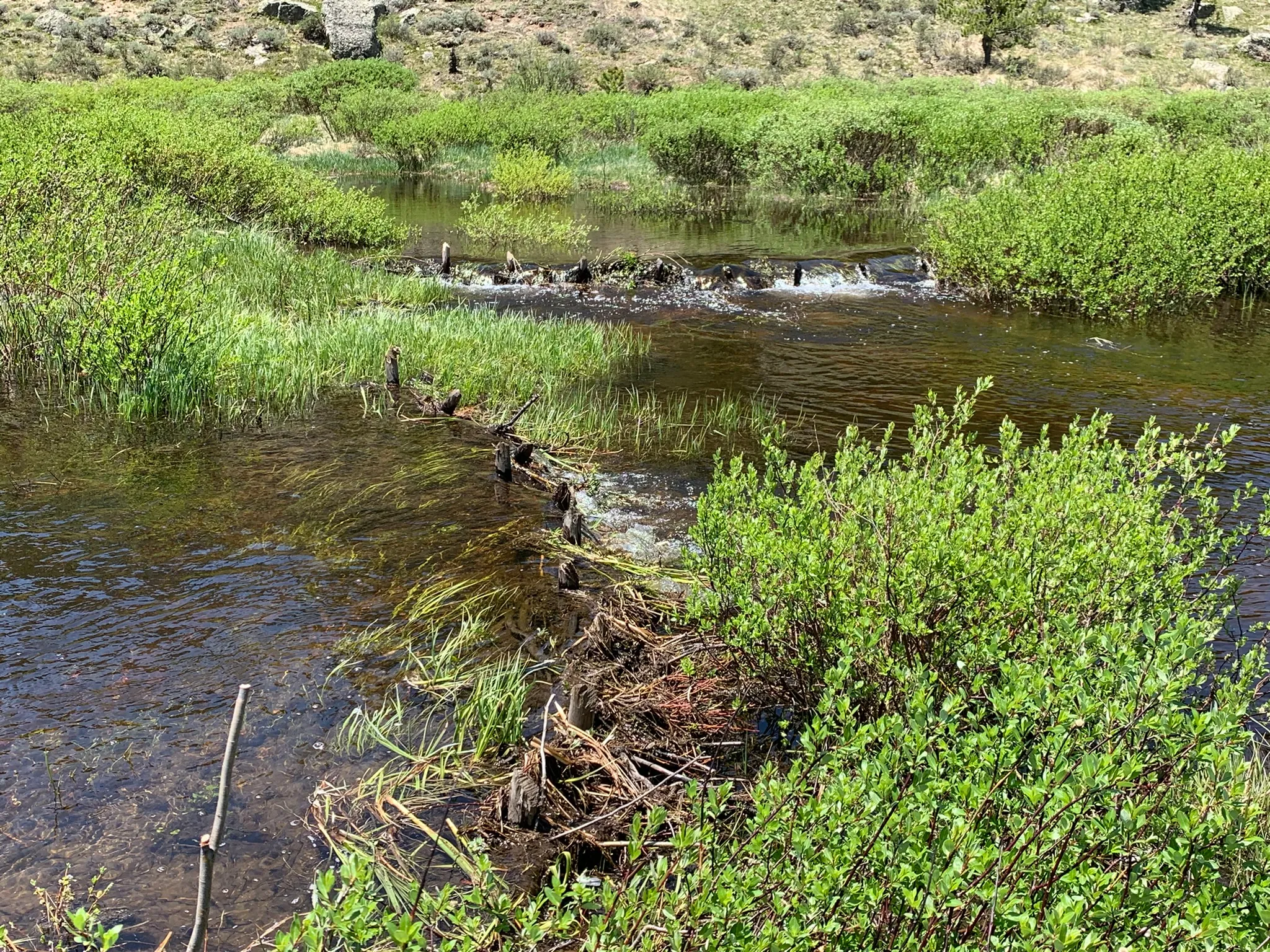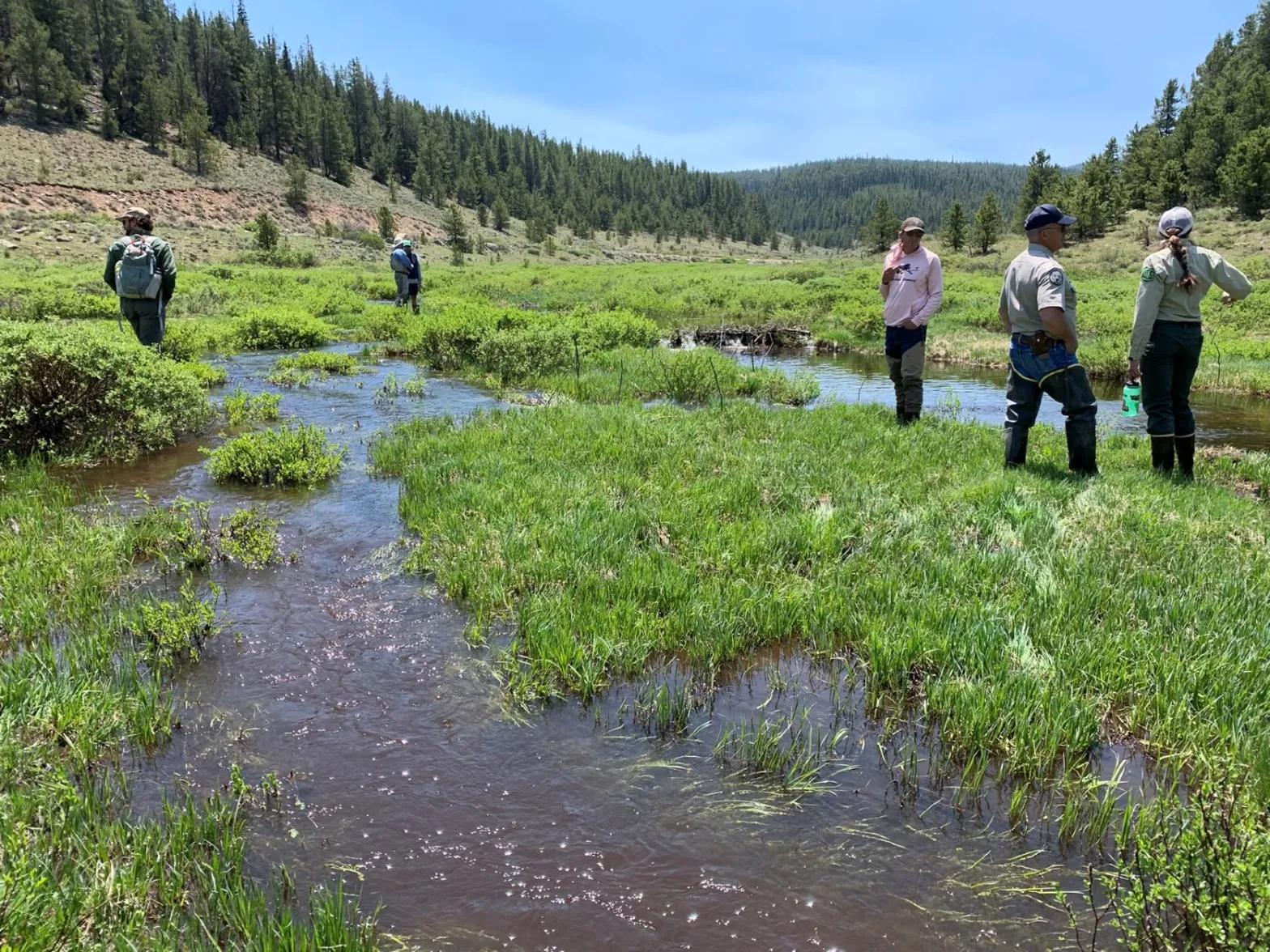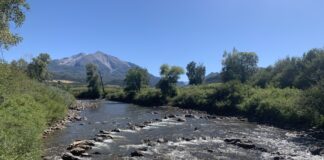
By Heather Sackett
Colorado officials have drafted a bill aimed at addressing a tension between stream restoration projects and water rights holders.
The draft clarifies that restoration projects do not fall under the definitions of a diversion, storage or a dam and do not need to go through the lengthy and expensive water court process to secure a water right.
But before a project begins, proponents would have to file an information form with the state Division of Water Resources showing the project will stay within the historical footprint of the floodplain before it was degraded and doesn’t create new wetlands, the draft bill proposes. These forms would be publicly available, and anyone could then challenge whether the project meets the requirements by filing a complaint, which would be taken up by DWR staff.
If stream restoration projects were required to secure a water right and spend money on an expensive augmentation plan, in which water is released to replace depletions it causes, it could discourage these types of projects, something the state Department of Natural Resources wants to avoid.
“We are trying to make it clear that stream restoration projects do not fall under the definition of diversion,” said Kelly Romero-Heaney, the state’s assistant director for water policy. “However, we put limits on what a restoration project is or isn’t and the restoration project has to fall within the historical footprint of the stream system.”

Slowing the flow
Restoration projects on small headwaters tributaries often mimic beaver activity, with what are called beaver dam analogues. These temporary wood structures usually consist of posts driven into the streambed with willows and other soft materials woven across the channel between the posts. The idea is that by creating appealing habitat in areas that historically had beavers, the animals will recolonize and continue maintaining the health of the stream.
The goal of process-based restoration projects like these is to return conditions in the headwaters to what they were before waterways were harmed by mining, cattle grazing, road building and other human activities that may have confined the river to a narrow channel and disconnected it from its floodplain.
In these now-simplified stream systems, water, sediment and debris all move downstream more quickly, said Ellen Wohl, a fluvial geomorphologist at Colorado State University.
“Natural rivers have all these sources of variability,” Wohl said. “They have pools and riffles, meanderings, obstructions like wood and beaver dams. All those things can help slow the flow, which leads to less bed and bank erosion. It allows sediment to be deposited gradually along the channel, and you increase biological processing and recharge of ground water and soil moisture.”
Although these projects benefit the environment, improve water quality and create resiliency against wildfires and climate change, keeping water on the landscape for longer could potentially have impacts to downstream water users. Under Colorado’s system of prior appropriation, the oldest water rights — which nearly always belong to agriculture — have first use of the water.
Some are concerned that if the projects create numerous ponds in the headwaters, it could slow the rate of peak spring runoff or create more surface area for evaporation, meaning irrigators may not get their full amount of water.
John McClow is an attorney for the Upper Gunnison River Water Conservancy District and is chair of a Colorado Water Congress sub-committee studying the bill, which will make suggestions to the bill’s sponsors. He said there have been wet meadow restoration projects in the headwaters of the Gunnison River that have harmed water rights holders.
“We had some examples of well-intentioned but poorly designed projects,” he said. “In each case we worked with water rights holders and removed the obstruction so their water rights were not impaired.”
McClow said he would like to see the bill set a standard to avoid problems at the outset of projects.
State Sen. Dylan Roberts, who represents District 8 and is chair of the Agriculture and Natural Resources Committee, is one of the bill’s sponsors. He said part of the bill’s urgency is so that Colorado can take advantage of unprecedented federal funding for stream restoration from the Infrastructure Investment and Jobs Act and the Inflation Reduction Act.
“If we can demonstrate to the federal government that we have a streamlined process for stream restoration projects, then we will make Colorado significantly more eligible for those federal funds,” Roberts said. “We are trying our best to position our state to receive the resources that we deserve.”
Roberts, a Democrat whose Western Slope district includes Eagle, Garfield, Grand, Moffat, Rio Blanco, Routt and Summit counties, expects the bill to be introduced later this month.
Romero-Heaney said the state’s system of water law works well because it is adaptable to the evolving needs of Coloradans. The stream restoration legislation aims to reduce barriers to projects while still protecting water rights.
“We are at that moment where we need to make a decision: Do we want to have a future with healthy streams that are providing all those environmental services, or do we want to make that future pretty difficult to achieve?” she said. “It’s a soul-searching conversation for the water community.”
Aspen Journalism covers water and rivers in collaboration with The Aspen Times. This story ran in the Feb. 5 edition of The Aspen Times, the Vail Daily, the Glenwood Springs Post-Independent and the Feb. 6 editions of the Grand Junction Sentinel and Steamboat Pilot & Today.
The Water Desk’s mission is to increase the volume, depth and power of journalism connected to Western water issues. We’re an initiative of the Center for Environmental Journalism at the University of Colorado Boulder. The Water Desk launched in April 2019 with support from the Walton Family Foundation. We maintain a strict editorial firewall between our funders and our journalism.





